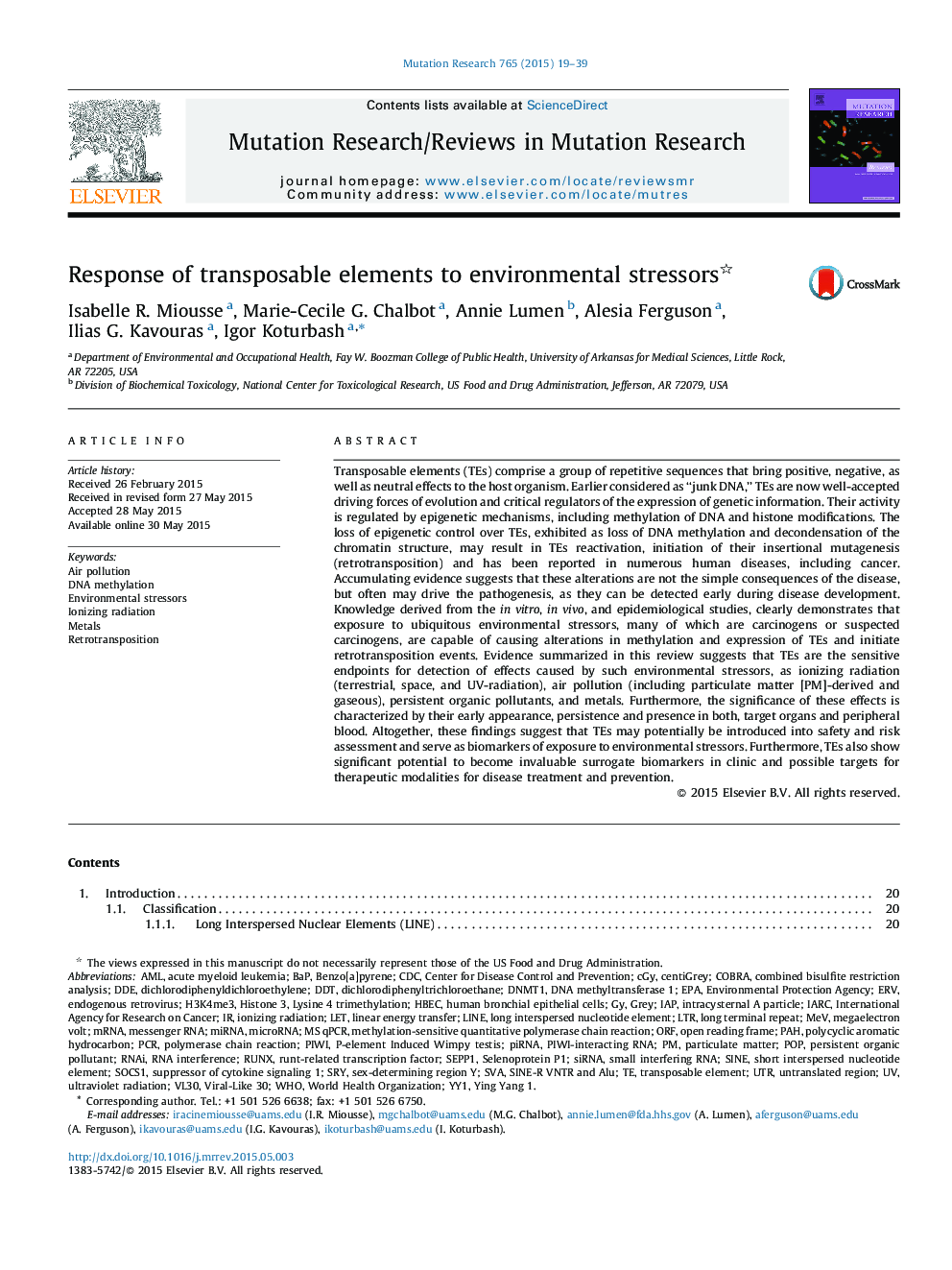| کد مقاله | کد نشریه | سال انتشار | مقاله انگلیسی | نسخه تمام متن |
|---|---|---|---|---|
| 2149546 | 1548749 | 2015 | 21 صفحه PDF | دانلود رایگان |
Transposable elements (TEs) comprise a group of repetitive sequences that bring positive, negative, as well as neutral effects to the host organism. Earlier considered as “junk DNA,” TEs are now well-accepted driving forces of evolution and critical regulators of the expression of genetic information. Their activity is regulated by epigenetic mechanisms, including methylation of DNA and histone modifications. The loss of epigenetic control over TEs, exhibited as loss of DNA methylation and decondensation of the chromatin structure, may result in TEs reactivation, initiation of their insertional mutagenesis (retrotransposition) and has been reported in numerous human diseases, including cancer. Accumulating evidence suggests that these alterations are not the simple consequences of the disease, but often may drive the pathogenesis, as they can be detected early during disease development. Knowledge derived from the in vitro, in vivo, and epidemiological studies, clearly demonstrates that exposure to ubiquitous environmental stressors, many of which are carcinogens or suspected carcinogens, are capable of causing alterations in methylation and expression of TEs and initiate retrotransposition events. Evidence summarized in this review suggests that TEs are the sensitive endpoints for detection of effects caused by such environmental stressors, as ionizing radiation (terrestrial, space, and UV-radiation), air pollution (including particulate matter [PM]-derived and gaseous), persistent organic pollutants, and metals. Furthermore, the significance of these effects is characterized by their early appearance, persistence and presence in both, target organs and peripheral blood. Altogether, these findings suggest that TEs may potentially be introduced into safety and risk assessment and serve as biomarkers of exposure to environmental stressors. Furthermore, TEs also show significant potential to become invaluable surrogate biomarkers in clinic and possible targets for therapeutic modalities for disease treatment and prevention.
Journal: Mutation Research/Reviews in Mutation Research - Volume 765, July–September 2015, Pages 19–39
